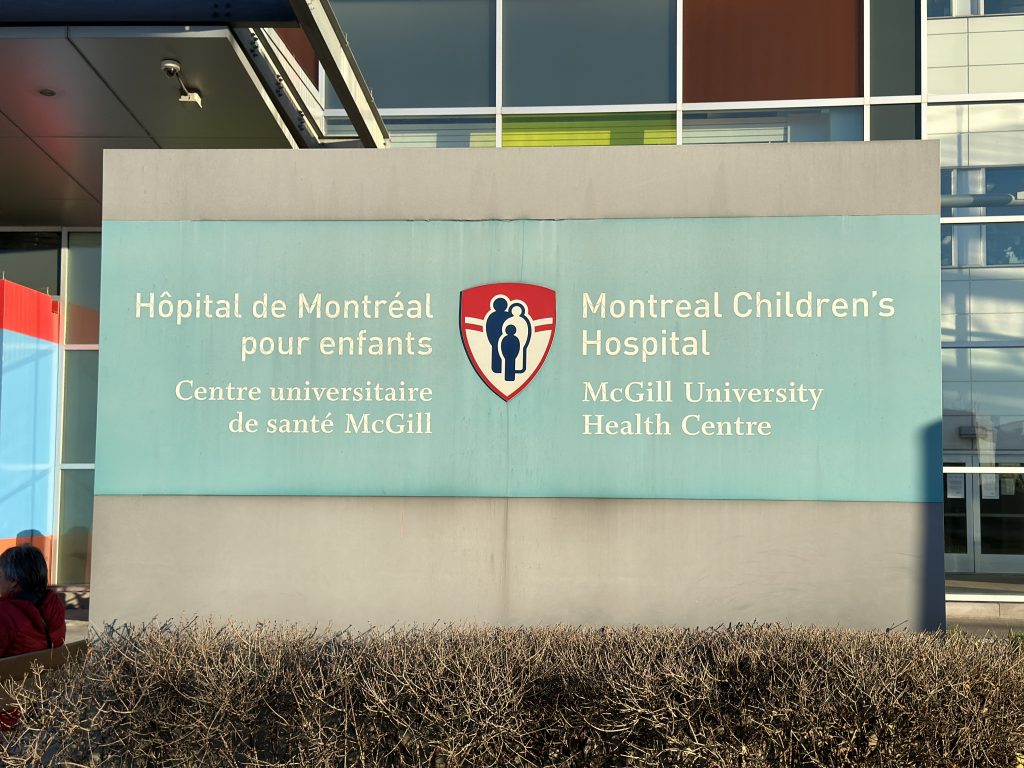Worrying increase in ‘atypical’ pneumonia in Montreal, doctor warns

Posted November 4, 2024 2:48 pm.
Last Updated November 7, 2024 10:26 pm.
An expert is warning the increase in what is known as “atypical” pneumonia, especially among school-age children and adolescents, is probably only the tip of the iceberg.
“I wouldn’t want people to think that this is a scary infection or an epidemic or a public health crisis,” said Dr. Jesse Papenburg, an infectious disease specialist at the Montreal Children’s Hospital. “But the fact remains that at the moment, it is putting pressure on our emergency rooms and there have been hospitalizations.”

“Atypical” pneumonias are caused by bacteria that do not usually cause pneumonia and do not tend to cause pus accumulation, Papenburg explained. The presentation of the disease will therefore be different from that of typical bacterial pneumonia.
Rather than an acute illness with high fever and respiratory distress, atypical pneumonia will progress more slowly with perhaps somewhat less intense symptoms, such as a persistent cough, a general feeling of fatigue, and a modest fever. However, some cases may be serious enough to require hospitalization.
Atypical pneumonias will usually go away on their own, Papenburg said, although there are antibiotics to fight the bacteria that causes them.
“But it’s important for the clinician to make the distinction because it’s not the same antibiotics that work (as with typical pneumonia),” he explained.
It is therefore crucial for doctors to know that there is an increased incidence of atypical pneumonia at this time, Papenburg added, since the unusual presentation of the disease could lead to misdiagnosis.

Administration of the wrong antibiotics, in addition to being unnecessary, could contribute to the worrying phenomenon of antibiotic resistance.
“When we prescribe antibiotics, we want to be sure that there is a good probability that we will be successful in treating the organism that is causing the infection,” said Papenburg. “But the doctor cannot necessarily know by seeing the patient, on the spot, which bacteria it is, or even if it is a bacteria or a virus.”
The correct diagnosis will therefore require an evaluation of different factors, such as the results of the x-ray, the epidemiological context or even the age of the patient, he said. For example, we know that atypical pneumonia mainly circulates among school-age children and adolescents, while children under two years of age are more at risk of classic pneumonia.
Outbreaks are seen in closed settings like schools, Papenburg said, because atypical pneumonia is more contagious than pneumonias caused by typical bacteria, but less contagious than viral infections that can escalate into viral pneumonia.
“It’s somewhere in between,” he said. “It’s a disease that can still be transmitted well under the right circumstances.”
We are currently seeing “very significant community transmission” in the Montreal region, “and we are feeling it in our outpatient clinics and in our emergency rooms,” he added.
“What we are seeing at the moment in pediatric hospitals is the tip of the iceberg,” warned Papenburg. “We see more severe cases … even some cases who have been admitted to intensive care. We are currently experiencing a major outbreak, but we see outbreaks [like this one] every three to seven years, so it’s not out of the ordinary. But it’s been a long time since we’ve seen so many cases.”
This outbreak comes at a time when the respiratory infection season is upon us, he recalled. Worried parents should not rush to the emergency room after 24 hours of fever and cough.
“It’s going to complicate things,” said Papenburg. “There are going to be other causes of fever and cough that will become very important.”
In this regard, he is delighted that Quebec and Ontario are the only two Canadian provinces to offer, from birth, vaccination against the respiratory syncytial virus, which is much talked about. This vaccine, he said, reduces the risk of infants being hospitalized for RSV infection by 80 per cent. Vaccination is also offered to babies under eight months whose medical condition justifies it.
Flu vaccination is also offered free of charge to toddlers over six months old, said Papenburg.
–This report by La Presse Canadienne was translated by CityNews








